From Silence to Story: How My Autistic Son Inspired a New Chapter in Inclusive Literacy
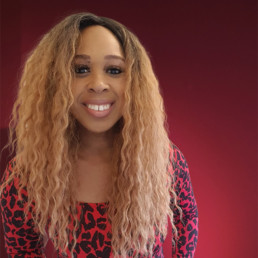
Written by Pamela Aculey
Pamela Aculey is an award-winning author, public speaker, and the founder of Just Like Me Books and MIXD Reality—the creators of the world’s first inclusive augmented reality picture book. Inspired by her autistic son Walter, Pamela is passionate about using storytelling and technology to create inclusive, interactive experiences that reflect the beautifully diverse ways children see and engage with the world. She is also a full-time carer and advocate for representation in education and beyond.
They say necessity is the mother of invention. But for me, motherhood itself sparked an invention that would not only change how my son reads, but how countless children see themselves in stories.
My journey with autism, storytelling, and technology began with my eldest son, Walter. A bright, beautiful mixed race boy who, in his early years, struggled to communicate verbally. Walter is autistic and was non-speaking until the age of 7. As a parent, nothing prepares you for the silence—especially when all you want is to hear your child say “Mummy.” But in that silence, I learned to listen differently. I began to see the world through Walter’s eyes: colourful, musical, expressive in ways that didn’t require words.
Books became a lifeline. But while reading to Walter, I noticed something glaringly absent—him. None of the characters looked like him. None moved, spoke, or communicated like him. Representation wasn’t just lacking; it was almost non-existent. I wasn’t just searching for stories; I was searching for mirrors.
And one day, in the silence, Walter showed me what connection could look like.
He had one particular book he returned to every single day. He’d scan the pages, then walk over and hand it to me—always open to the same page. He’d hum and flap the book gently in front of my face. I assumed he wanted me to read the story—again—for what felt like the tenth time that day. So, I would.
But then Walter would get upset. Irritated.
He’d snatch the book out of my hands and throw it to the floor.
And a few minutes later? He’d bring it back and start the whole process again.
I was confused. Frustrated. Heartbroken.
Until one day, I paused long enough to really look at the page he kept coming back to.
It was an image of a little boy drinking water.
Suddenly it hit me:
Walter wasn’t asking for a story.
He was trying to tell me he was thirsty.
That moment changed everything. My little boy, who didn’t use words, had found his own way to communicate. He didn’t need language—he needed connection.
That’s when the idea behind Just Like Me Books was born. I wanted to create stories that reflected children like Walter—not only in how they look, but in how they experience the world. Our debut title, Buster Finds His Beat, follows Buster, an autistic, music-loving mixed-heritage boy who communicates using beats, rhythm and music. Sound familiar? It should. Buster is inspired by Walter.
To bring the story to life in a way that resonated with children like him, I incorporated augmented reality (AR). I created an app where children can scan the pages and watch Buster dance, laugh, and play drums in 3D. For neurodivergent readers, this fusion of storytelling and sensory experience offers not only joy but accessibility.
Seeing themselves in stories is one thing. Interacting with them? That’s a whole new world.
This innovation became the foundation for MIXD Reality—a creative tech company I co-founded to explore how immersive technology can transform learning, reading, and communication. We now partner with educators, publishers, and brands to create AR-powered experiences across industries: from children’s books and emotional literacy tools to museums, healthcare, and financial literacy.
With nearly 1 in 7 people identifying as neurodivergent (NHS England), we need more than just good intentions—we need practical, inclusive resources. Traditional classroom tools often leave behind children who process the world differently. AR bridges this gap by turning passive reading into an interactive journey that supports diverse learning styles.
We are currently in the early stages of conducting our own research to explore how augmented reality can support autistic children aged 5–8. We are actively seeking partnerships with families and organisations to help us carry out this important work. If you would like to be part of this, please get in touch. Because innovation shouldn’t be reserved for the few—it should uplift the many.
I’ve watched Walter go from being non-speaking to now writing his own short stories—and talking all the time! He’s 11 now, and still beats on everything—tables, tubs, anything that makes a sound. But more importantly, he reads. Not because he has to, but because he wants to. And when he saw himself in Buster, he beamed.
That smile reminded me why I started this work in the first place.
We often talk about diversity and inclusion in terms of policy, but what about practice? Are our bookshelves inclusive? Are we designing content with all learning styles in mind? Are we creating mirrors and bridges?
My hope is that Just Like Me Books and MIXD Reality spark more questions, more conversations, and more creativity.
Because every child deserves to be the hero of their own story—and sometimes, all it takes is pausing long enough to really look at the page they’re holding.
BLAM UK BOOK: Global Black Narratives for the classroom: Vol 1 & 2
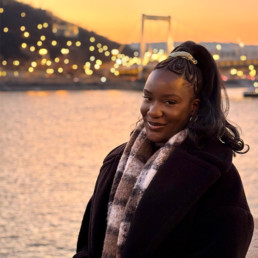
Written by Bettina Ogbomoide
Project Coordinator at BLAM UK (Black Learning Achievement and Mental Health UK). Passionate about Black studies, and dedicated to educating and exploring the cultures and histories of the African diaspora.
Too often, Black history is limited to the margins of the school calendar, and only acknowledged during Black History Month, which also normally tends to focus on specific narratives i.e. the transatlantic slave trade or the civil rights movement in America. This approach not only restricts the richness and diversity of Black experience, often excluding Black Britain altogether, but also squanders the opportunity to engage students with a fuller, more accurate version of global and British history.
At BLAM UK, we believe that Black history is not an add-on, but rather it is an integral part of understanding the world we live in. This is why we developed Global Black Narratives for the Classroom, a two-volume educational resource designed to facilitate primary school teachers to embed Black history, including British and global narratives throughout the academic year. Rooted in England’s National Curriculum, the books aim to save teacher’s time, boost their confidence and subject knowledge, and make it easy to teach global Black histories in a way that is accessible and inclusive.
Volume 1: Black Britain and Europe
The first volume focuses on the histories of Black communities in Britain and across Europe. It offers creative lesson plans for themes ranging from early Black presence in Tudor England to 20th-century activism and cultural movements. By highlighting figures such as Claudia Jones, Olive Morris, and Josephine Baker, the book challenges educators to expand their understanding of British and European history beyond narrow Eurocentric, male-domoinated, traditional narratives.
Volume 2: Africa, the Americas, and the Caribbean
The second volume provides a broader global context. It provides a deep dive into African histories before colonialism, the cultural traditions of the Caribbean, and the layered experiences of Afro-descendant communities across the Americas. Through guided activities and thought-provoking content, students are encouraged to explore the global interconnectedness of Black narratives and resistance.
Both volumes are filled with practical tools which include lesson plans, engaging worksheets and creative activities, making it easier for teachers to deliver high-quality lessons with confidence and cultural sensitivity.
At its core, Global Black Narratives for the Classroom equips educators with the toolkit they need to centre Black perspectives in the curriculum, not just occasionally or tokenistically, but consistently and meaningfully. By doing so, we not only enhance the learning experience for all students, but we also create a more inclusive and culturally relevant and responsive educational environment.
Teachers who are seeking to counter the narrow, divisive rhetoric we are seeing increase, or are committed to anti-racist pedagogy will find in these books an invitation for reflection and the opportunity to increase your subject knowledge. All whilst encouraging critical thinking, and opening up space for alternative perspectives and more diverse stories to be told in the classroom.
You can purchase Global Black Narratives Volumes 1 & 2 from independent, Black-owned bookstores Book Love and Afrori Books, as well as Amazon, and Routledge.
Please see the links below to purchase:
Book Love (Black-owned anti-racist bookseller)
Vol 1: Global Black Narratives for the Classroom Africa, the Americas and the Caribbean
Vol 2: Global Black Narratives for the Classroom: Britain and Europe
Afrori Books (Black-owned independent book shop)
Brighthelm Church & Community Centre, Brighton and Hove, Brighton BN1 1YD
Vol 1: Global Black Narratives for the Classroom: Black Britain and Europe –
Vol 2: Global Black Narratives for the Classroom: Africa, the Americas and the Caribbean
Routledge
Vol 1: Global Black Narratives for the Classroom: Black Britain and Europe
Vol 2: Global Black Narratives for the Classroom: Africa, the Americas and the Caribbean
Amazon
Vol 1: Global Black Narratives for the Classroom: Black Britain and Europe
Vol 2: Global Black Narratives for the Classroom: Africa, the Americas and the Caribbean
Order our book and spread the word!
BLAM UK is here to transform the way we think about Black narratives, one classroom at a time!
Why Black History Is More Than Just a Month: Embedding Legacy, Learning and Leadership All Year Round
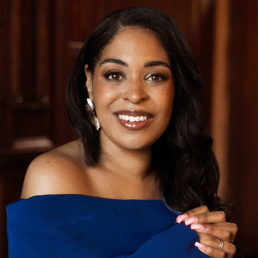
Written by Ellisha Soanes
Ellisha is a multi award-winning Equality, Diversity, and Inclusion Specialist. Ellisha worked as Director of Equality Diversity Inclusion for several colleges and adult education in East Anglia, and as a lecturer teaching EDI has worked in the education sector for the over 10 years, and in the health and social care/ Public Health sector for over 20 years. Ellisha works as an international consultant and collaborates with businesses and community projects to empower others and create new opportunities through leadership. Ellisha has worked closely with the Department of Education, and continues to do so on creating changes, sitting at parliamentary boards. She has been featured in global news journals as column writer and papers.
As we mark five years since the murder of George Floyd, the question many of us in education and leadership circles are still grappling with is this: how do we move from reactive to proactive when it comes to race, equity, and inclusion? How do we ensure that Black history is not confined to a single month in October, but becomes a golden thread woven through every aspect of our curriculum, policies, and culture?
The answer lies not in performative gestures, but in intentional action.
Black history is British history, world history, and human history. It doesn’t start or end with the transatlantic slave trade or the U.S. civil rights movement — though those are key chapters. But if that’s all we teach, what message does that send to our Black students and to other students and colleagues? That our legacy begins with oppression?
We must ask better questions and dig deeper. Were we not inventors, pioneers, warriors, scholars? Black Tudors existed. Black soldiers fought in both World Wars. Ancient Kemet — known today as Egypt — led the world in medicine, astronomy, and education. Our contributions span centuries and continents.
So how can educators ensure that Black history is embedded all year round, not just dusted off for October? Here are three practical steps based on my experience:
- Invest in Training and Development – Begin With Yourself
One of the most common questions I ask educators is: Were you taught Black history in school? For most, the answer is no — or if yes, only slavery and civil rights.
This is not just a gap in knowledge. It’s a gap in identity, empathy, and understanding.
You can’t teach what you don’t know. That’s why anti-racism training is vital. But it’s not enough to attend a workshop and tick a box. True transformation starts with self-reflection. What are your biases? What stories are missing from your own education?
Before you try to lead young people, work with your own teams first. Create spaces where educators can learn, unlearn, and build confidence in delivering diverse content. Challenge the assumption that Black history is “extra” – it’s essential.
- Appoint EDI Ambassadors at Every Level
Embedding diversity is not the responsibility of the one Black staff member, the LGBTQ+ colleague, or someone with a disability. It must be everyone’s job.
That’s why I always recommend appointing Equality, Diversity, and Inclusion (EDI) ambassadors across all levels — from your governing board (yes, even your governors should include an EDI champion) to your reception team.
These ambassadors shouldn’t just represent communities — they should lead change. Help shape policy, organise events, challenge bias, and ensure that inclusive practice is not a side project but a core priority.
By having representation across your organisation, you ensure accountability — and create role models who are visible, vocal, and valued.
- Adopt Student-Led Approaches: Celebrate ‘Heroes on Your Doorstep’
Young people don’t just want to be taught — they want to co-create.
Some of our most impactful work has come from listening to what students want to see in their curriculum. For example, in our public services courses, students highlighted local Black heroes — people whose stories are often forgotten, but who made a lasting impact.
One such figure is Derrick Bobbington Thomas, one of the first Black servicemen from the Windrush generation in Suffolk. His story, shared by students, was a powerful reminder of the richness of local history.
Another initiative included working with Wooden Roots, an African drumming group deeply rooted in African history and culture. Not only did they bring energy and rhythm to our college campuses, but they also played a role in the Black Panther movie — showcasing how African heritage resonates on global stages. https://www.voice-online.co.uk/news/uk-news/2024/06/05/black-panther-african-drumming-company-to-offer-bursaries-for-underrepresented-groups/
Partnering with local charities, community groups, and Windrush societies is a brilliant way to fill in the historical gaps. They offer stories, speakers, and resources that textbooks don’t. And they help students see that Black history is not something far away — it’s here, in our towns, schools, and families, as author and collobarting with young people and communities I’m proud to say linking with your community, helped create black history interactive workbook used across schools in the east of the region and beyond. Elimu little book of knowledge- find your free copy here: https://www.aspireblacksuffolk.org.uk/_files/ugd/63af3a_5af8d55d89244cde90d0a8387a0aaa82.pdf
Nelson Mandela once said, “Education is the most powerful weapon you can use to change the world.” That change doesn’t happen overnight — but it begins with honest conversations, committed people, and consistent actions.
Black history isn’t just for October. It’s for every subject, every classroom, and every child.
When we expand the narrative, we empower minds. When we recognise the full spectrum of Black excellence, and when we embed this knowledge into the very fabric of our schools and organisations, we don’t just tick boxes — we transform lives.
So let’s not wait for a headline or a month. Let’s lead with purpose, educate with passion, and celebrate Black history — every day of the year.
Check out these articles to help you find your own heroes on your doorstep..
How do you plan good lessons on homosexuality when resources only tell half the story? A call for proper representation in religious education textbooks

Written by Jonny Tridgell
Jonny began his career as a secondary school teacher in 2009 and has since been a head of sixth form, head of department and lead practitioner for EDI. He has also worked in teacher education as a mentor, curriculum tutor and general tutor on the University of Oxford PGCE. He completed his MSc in Education (Digital and Social Change) at Oxford in 2024. He is currently working as Equality, Diversity & Inclusion Data and Insights Officer at Jesus College, Oxford, alongside roles as a teacher, teacher educator and researcher.
Imagine you are planning a GCSE lesson on Christian beliefs about homosexuality, but you don’t feel confident about the topic. You might have a theology degree and a PGCE in religious education, but have never really studied queer theology, or maybe you are one of the many non-specialists delivering these lessons in the UK (Orchard, 2024). You’re not sure where to begin planning your lesson. Do you do a debate with the students? Perhaps you could do some textual study, but then which texts? You know that Christianity has often the basis for homophobia, but you also don’t want to suggest to your students that Christianity is prejudiced or bad. So, what do you do next?
You might look for shared resources made by a colleague or look online. You might use AI. One solution would be to use a textbook or revision guide endorsed by your exam board. Jackson et al (2010) found that many teachers used textbooks just for that and in my experience as an educator and researcher, many teachers (including me), still do. Textbooks are helpful for pitching, but also, geared as many are to exams, provide a great deal of reassurance. However, there is a risk to this, because RE textbooks in the UK tend to sanitise and essentialise Christian beliefs about homosexuality and to present these through a Eurocentric lens.
In a recent paper for The British Journal of RE (Tridgell, 2025), I found that textbooks represent Christian approaches to homosexuality in a way that has been sanitised, excising those churches that promote explicitly anti-LGBTQ+ views. These textbooks also generally excluded African Christianities and churches, portraying African Christians as recipients of aid or evangelism only, not as theologians. One reason for this might be a desire to promote community cohesion by only presenting socially acceptable or “positive” views of Christianity as real Christianity (see arguments made by Smith et al, 2018), even if this presents a view of Christianity that is false. The Eurocentric approach here is perhaps even more troubling, given the way this might exclude those whose experience of Christianity is not reflected in these textbooks.
As a gay RE teacher who studied Christian approaches to homosexuality, I can plan these lessons carefully and accurately, and I feel confident about balancing the need for academic integrity with keeping students (and myself) safe in the classroom. My years teaching about Christian attitudes to homosexuality have taught me hard lessons about framing; in my view, it is always best to treat this as a theology lesson, rather than an ethics one – that is, thoughtfully examining different Christian views across the breadth of the religion but never debating whether it is okay to be LGBTQ+ or if homophobia and transphobia are allowed. Importantly, I am not trying to criticise those who lack this confidence or this experience – I understand why someone might reach for a textbook to help plan this lesson – but I am critical of publishers who put out resources that fail to properly help with this planning. RE/RS teachers – especially those who have other specialisms – need proper support and guidance about what to teach and how to teach it. In short, RS/RE textbooks should:
- Include the full range of Christian views of homosexuality, including those that advocate for conversion therapy or other forms of anti-LGBTQ+ violence
- Include Christianities (both anti-LGBTQ+ churches and those that are affirming, along with those in between) from across the world, including Africa across all areas of Christian life.
- Recognise the inherent “messiness” of religion, and that belonging to a denomination does not mean someone’s personal beliefs necessarily fully align with its official teachings
- Frame lessons on LGBTQ+ people through theology rather than ethics; it is not safe to debate the existence of LGBTQ+ people nor is it reasonable to ask whether Christianity as a whole is homophobic; better to evaluate how a text is being used, for example, or ask why churches might have different views.
If you are the teacher I described, I would advocate caution and some reflection on whether the resource you are using really reflects the full story. If you are a textbook publisher or academic resource-maker, I hope this serves to call you in; community cohesion requires us to do epistemic justice (Fricker, 2003) to all those in our community – it is not served by pretending the world is not as it is. After all, how can we champion LGBTQ+ liberation and decolonisation if we only tell half the story?
Jonny’s article “Sanitised, essentialised and Eurocentric: an analysis of the (mis)representation of Christian beliefs about homosexuality and African Christianity in English RE textbooks” has been published Open Access here.
Turning Vision into Action: Practical Steps for Building Diverse and Inclusive School Governance

Written by Krystian McInnis
Krystian McInnis is a Religious Education consultant, advisor, and researcher specialising in decolonising and diversifying Religious Education. With a career that spans the public, private, and charity sectors, he brings extensive national and international experience in curriculum diversification and decolonisation. As the Co-Founder of Reimagining Education, Krystian is dedicated to creating a more inclusive and equitable educational system where everyone feels seen, heard, and that they belong.
As I reach the conclusion of this blog series on the importance of diversity in school governance, I feel it paramount to close by exploring the final critical phase for success: action. Having previously discussed the profound impact that diverse governing boards can have on student success, school culture, and community engagement, it’s arguably time to move from theory to practice. With the call for diversity is clear, yet little traction still appearing to be being made, the time has come, for schools and trusts turn blue-sky ideas into concrete, lasting change?
Therefore, this final blog will outline practical next steps that educational leaders, school boards, and trustees can take to ensure their governance structures are diverse, inclusive, and reflective of the communities they serve.
- Commit to a Diversity Strategy with Clear Goals
The first step in creating a diverse governing board is making a clear, intentional commitment to diversity at all levels of governance. For genuine change to come about, it is vital that this commitment be reflected in the school’s action plan, vision and arguably leadership performance objectives too. It’s not enough to express the desire for diversity, it must be woven into the fabric of the school’s governance strategy. Therefore, schools and trusts must ensure they:
- Set measurable diversity goals for their boards, such as increasing representation from underrepresented groups within a set timeframe.
- Establish a diversity working party that includes key stakeholders, such as governors, school leaders, and community representatives, to oversee and implement these goals.
- Publicly commit to diversity through mission statements or diversity pledges, making it a visible priority for all members of the school or trust.
- Implement Inclusive Recruitment Practices
To diversify school governing boards, schools and trusts must rethink their recruitment processes. Traditional recruitment methods often result in boards that reflect the status quo, typically lacking in diversity, with remarks of ‘we have always done it this way’, far too commonly used. By changing how boards recruit members, schools can ensure that they attract a wider range of candidates with varied experiences and backgrounds. In practice, the necessary steps should include:
- Actively reaching out to underrepresented communities through outreach campaigns, including advertising board positions within the local community, local media, and through social media platforms that engage diverse audiences.
- Creating a skills-based recruitment process that prioritises a broad range of perspectives, ensuring that all candidates are evaluated for their ability to contribute to the school’s overall mission, not just for their professional credentials.
- Partnering with diversity-focused organisations to identify potential board members who can bring new perspectives to governance.
- Provide Tailored Training and Support for New Governors
Recruitment is just one part of the puzzle. Once new members are on the governing board, it’s crucial to ensure they are equipped to succeed. Adequate training and support will help diverse governors feel empowered to contribute effectively, ensuring that their diverse perspectives are heard and valued. Therefore, I would recommend that schools and trusts:
- Revise induction programs to include training on key topics such as cultural competency, anti-racism, inclusive leadership, and unconscious bias.
- Create a mentorship program for new governors, pairing them with experienced board members who can guide them through the challenges of governance and help them navigate any organisational barriers they may face.
- Encourage ongoing professional development for all board members to foster a culture of continuous learning and reflection.
- Track and Use Diversity Metrics to Guide Decision-Making
To ensure that diversity is being both prioritised and sustained, it is of utmost importance schools and trusts track diversity metrics. This data not only helps boards to measure their progress but also provides valuable insight into where gaps exist and where further action is needed. Whilst it might appear difficult at first, collecting and using data effectively requires:
- Tracking diversity metrics such as gender, ethnicity, disability, and socioeconomic status among governors to assess the diversity of the board.
- Using this data to set goals for recruitment and retention, as well as to identify potential barriers that may prevent underrepresented groups from joining the board.
- Regularly reviewing the data to assess the effectiveness of diversity strategies and adjusting recruitment and development practices as needed.
- Foster a Culture of Inclusion at Every Level of Governance
A truly diverse governing board is one where all members, regardless of their background, feel welcomed, valued, and empowered to contribute. With a top-down approach still heavily ingrained within the educational system, the culture of the board plays a crucial role in the long-term success of diversity initiatives. Therefore, schools and trusts must:
- Develop an inclusive culture that actively encourages and celebrates diverse viewpoints. This includes ensuring that all voices are heard in meetings, that different perspectives are respected, and that decision-making processes are inclusive.
- Address and challenge any discriminatory behaviour or microaggressions that may arise, creating a safe environment for diverse board members to express their views and ideas.
- Recognize the contributions of diverse members and ensure that their insights are valued in shaping school policies, strategies, and outcomes.
The Road Ahead: The Future of Inclusive Governance
So, as this series concludes, I hope it’s clear that diversity in school governance is not a destination, but an ongoing journey. However, by taking the practical steps outlined, I am confident that schools and trusts can move from aspiration to action, ensuring that their governing boards are not only diverse in makeup but also genuinely inclusive in practice.
The path to inclusive governance requires commitment, accountability, and a willingness to challenge the status quo, however, by embedding diversity at the heart of governance, schools can build stronger, more resilient organisations that are better able to meet the needs of every student. As an industry, we must embrace this opportunity to lead with intention, innovation, and inclusion—because when school governance reflects the diversity of the communities it serves, the whole school system thrives.
Therefore, as this series draws to a close, I ask that we challenge ourselves with one final question: What practical step can my school or trust take today to begin building a more diverse and inclusive governing body?
My Experience as a Speaker at the Diverse Educators Conference in Scotland: A Step Towards Change
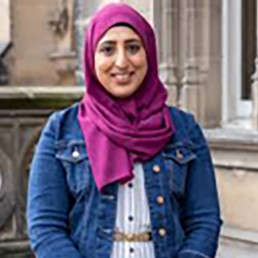
Written by Sadia Hussain-Şavuk
Sadia Hussain-Şavuk, originally a Biology teacher, is now a Diversity, Equality and Inclusion Lead working predominantly with schools within the independent sector providing teacher training, pupil workshops and consultancy in her main area of anti-racism. In addition to this she sits on a number of boards including the BSA/IELA Inclusion Advisory Board and is co-chair of the Curriculum Reforms workstream of the Anti-Racism in Education Programme.
In February, I had the incredible honour of speaking at the inaugural Diverse Educators Conference in Scotland. As the first event of its kind, the conference was a bold and inspiring step towards promoting inclusivity, representation, and meaningful change within education. The atmosphere was charged with energy, optimism, and a deep-seated belief in the power of education to shape a better future for all.
The Power of Positivity
One of the most striking things about the conference was the positivity and passion that the participants brought to the table. Educators from across Scotland, with diverse backgrounds and experiences, gathered together not only to share their ideas but to spark action. There was a sense of unity and purpose that made the event feel more like a movement than a typical conference. As I stood before such an engaged audience, it was incredibly reassuring to see how committed these educators were to making positive changes in their schools, classrooms, and communities. Whether it was promoting inclusivity in the curriculum, advocating for equitable opportunities, or fostering a more diverse learning environment, it was clear that the educators in the room were not just talking about change – they were living it. It’s moments like these that remind me why I became an educator in the first place: to make a difference. And seeing so many others who share that same drive was truly inspiring.
The Challenges We Still Face
Despite the immense positivity, there was an undercurrent of concern that stayed with me throughout the conference. While we celebrated the progress that has been made and the steps that are being taken to make education more inclusive, we cannot ignore the slow pace of change. It is difficult to not feel a sense of frustration when you consider how far we still have to go. Although there are pockets of progress, systemic barriers persist. In many schools, diverse perspectives are still sidelined or tokenised. Too often, young people with marginalised identities still face barriers to success, whether that be in terms of representation, access to resources, or the recognition of their unique challenges. As educators, we know that it’s not enough to simply raise awareness. The real work lies in creating long-term, sustainable change. But when progress is slow, it feels as though we are failing the very students we are meant to serve. The young people of today – those who will shape our tomorrow – are waiting for us to do better. And while I am hopeful for the future, it’s hard to ignore the gap between where we are now and where we need to be.
A Call to Action
The Diverse Educators Conference served as both a celebration of what’s been achieved and a reminder of the work that remains to be done. I left the event with a renewed sense of purpose, but also a deeper understanding of the urgent need for change. As educators, we must keep pushing the boundaries of what is possible. We must continue to challenge the status quo and demand that every child, regardless of their background, has access to a truly equitable education. We cannot afford to wait for change to happen on its own – we must be the ones to make it happen. The diversity, passion, and commitment I witnessed at the conference filled me with hope, but I also know that it will take all of us – working together, side by side – to ensure that the next generation of students can thrive in an educational system that fully supports their needs and potential. In the end, the Diverse Educators Conference wasn’t just a moment of celebration – it was a call to action. It was a reminder that our work is far from over, and that every step we take towards inclusivity and equity is a step closer to a brighter future for all. Let’s not rest until that future becomes a reality.
Championing Diversity Through Literature: Our Pioneering Journey with Lit in Colour

Written by Gemma Hathaway
EDI Trust Lead for Inspire Education Trust, Assistant Headteacher at Blue Coat School Coventry.
At Blue Coat School Coventry, our partnership with Penguin and Pearson through the Lit in Colour project has been transformational. It has reimagined how we engage with English literature, ensuring that the stories we teach truly reflect the diversity of the world our students live in.
As the EDI Trust Lead (Inspire Education Trust), I have been privileged to work alongside the English department in this pioneering project. It’s been about more than simply adding new books to the curriculum — it’s been about fostering a deeper, more authentic approach to inclusion. Through this project, we have embraced the belief that literature has the power to validate identities, open minds, and create communities rooted in understanding and empathy.
Choosing The Empress
As part of Lit in Colour, we made the bold decision to teach Tanika Gupta’s powerful book The Empress at GCSE. Set against the backdrop of British colonial history, the play explores the relationships between Queen Victoria, Abdul Karim, and Rani Das, a young ayah from India.
Choosing The Empress was a courageous move — it challenged traditional literary choices and brought forward voices that have too often been marginalised. As a school community, we knew this would be a bold step, but one that was absolutely necessary.
Shaped by Broader Conversations
Our journey has not happened in isolation. The work of organisations like Diverse Educators, Equaliteach, and the ASCL EDI sub-groups has played a huge part in supporting us to approach this work with authenticity and integrity. Through dialogue, training, and collaboration, we’ve deepened our understanding that genuine change requires courage, reflection, and a commitment to ongoing learning. We have proudly embraced the idea that it’s okay to feel uncomfortable at times — because that discomfort signals that something meaningful is shifting.
Recognition and Gratitude
It was an incredible honour when Pearson recognised Blue Coat School as a Bronze Winner in the ‘Making a Difference’ category of their national awards. This accolade celebrates schools that have gone above and beyond in driving positive change — and it felt like a powerful acknowledgement of the journey we have been on.
We are so grateful to Pearson, Penguin, and the Lit in Colour team for their partnership and encouragement. Their support has allowed us to be bold, to innovate, and to centre pupil voice in every aspect of decision making.
Looking Ahead
But this is only the beginning. We are excited about the ripple effect this work is already creating — not just within our own school, but across the wider education community.
We are currently working with Tanika Gupta to explore adapting The Empress for a live stage production, offering students an even richer, more immersive experience. It’s another way to bring these powerful stories to life, allowing young people to step into the characters’ shoes and truly understand their journeys.
In May, we will be attending a national celebration event in London, where schools from across the country will gather to continue raising the voices of authors who deserve a platform within our curriculums. We hope to encourage other Multi-Academy Trusts (MATs) and schools to review their English curriculums with bravery and vision — to be bold in asking: Whose stories are we telling? And whose voices are we still missing?
At Blue Coat, we believe that every student deserves to see themselves in the stories they study. Through projects like Lit in Colour, we are building a future where every voice matters — and where literature truly belongs to us all.
References:
Distorted Mirrors, Fogged Windows: A Call for Deeper Representation in Education
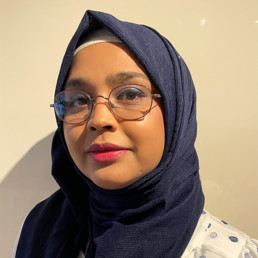
Written by Tamanna Abdul-Karim
Tamanna Abdul-Karim is Assistant Headteacher responsible for Literacy, Equality and Diversity in an inner city school in Birmingham. She has completed the NPQLL and Masters in Educational Leadership and Management /Level 7 Apprenticeship with the National College of Education. She is an English teacher at heart and her desire to create a sense of equality and justice motivates her. It is through education, she hopes to create impact and leave a meaningful legacy.
The concept of “mirrors, windows and sliding doors,” introduced by Dr. Rudine Sims Bishop, has become a foundational framework in conversations around diversity in children’s literature and multicultural education. In her metaphor, mirrors reflect readers’ own identities and lived experiences, windows offer insights into lives different from their own, and sliding doors allow readers to step into those other worlds, fostering deeper engagement and understanding.
This framework is not only relevant in literature — it has transformative potential across all aspects of school life. From curriculum design and cultural representation to enrichment opportunities and even staff recruitment, it offers a way to embed inclusion and equity into the very fabric of educational settings. When embraced authentically, it cultivates a culture where every student is seen, valued, and empowered.
However, if not approached thoughtfully, these mirrors and windows can distort reality. They can perpetuate stereotypes, invisibilise complexity, and contribute to feelings of alienation, shame, or disconnection — particularly for students from minoritised backgrounds.
A Personal Reflection: Distorted Mirrors, Fogged Windows
As a child of Bangladeshi heritage growing up in inner-city Birmingham in the 1990s, my school experience offered only two narratives about my country of origin: that it was poor and that it flooded. While these facts are not untrue, they painted a one-dimensional picture that deeply distorted both my self-image and my understanding of my heritage.
The mirror I was presented with reflected famine-stricken children, submerged villages, and chaotic streets. The window offered a view steeped in deficit — one that suggested my background was something to be downplayed, or even disowned. As a result, I internalised a sense of shame. I learned to code-switch early: Bengali at home, English at school. I adapted the way I spoke, behaved, even the way I ate — compartmentalising parts of my identity to belong.
What my schooling failed to reveal was a far richer, more complex history. I didn’t learn that before colonial rule, Bengal was one of the most prosperous regions in the world — a hub of culture, trade, and innovation. I wasn’t taught about the globally coveted Jamdani textiles, or that Dhaka was once one of the busiest ports on earth. There was no mention of how British colonial policies contributed to devastating famines, or how Bangladesh achieved independence through extraordinary resilience and sacrifice.
This erasure had consequences. It shaped how I saw myself — and how I believed others saw me. It taught me that some stories are celebrated, while others are sidelined.
Who Holds the Mirror? Who Builds the Frame?
This experience highlights a deeper issue: representation is not just about inclusion, but about how people, places, and histories are portrayed — and who gets to do the portraying.
We must ask: Who is holding up the mirror? Whose perspective shapes the window? What frames are we using to present narratives of identity, culture, and heritage?
It is not enough to simply provide visibility. We must examine the structures — the frames and lenses — through which these representations are filtered. If the frame itself is biased or incomplete, then the images it presents will be equally flawed.
A Call to Educators: From Representation to Reimagination
Educators carry immense responsibility. We are not only curators of knowledge — we are architects of perception. Every decision we make about curriculum, literature, resources, or enrichment shapes the mirrors and windows we offer to our students.
This work requires deep reflection. We must interrogate our own biases, challenge inherited narratives, and resist the temptation to present simplified or tokenistic views of cultures and communities. We need to move beyond surface-level inclusion to truly equitable representation.
This begins with unlearning — with a willingness to revisit what we’ve been taught, and to seek out the histories, voices, and perspectives that have long been marginalised.
Because when children see themselves reflected fully — in all their richness and complexity — they stand taller. And when they’re given a window into the full humanity of others, they grow kinder, more curious, and more connected.
Let us hold up better mirrors. Let us open clearer windows. Let us build sliding doors that do not just invite exploration, but also affirm belonging.
Reimagining School Leadership: Diversity as a Catalyst for Transformation

Written by Krystian McInnis
Krystian McInnis is a Religious Education consultant, advisor, and researcher specialising in decolonising and diversifying Religious Education. With a career that spans the public, private, and charity sectors, he brings extensive national and international experience in curriculum diversification and decolonisation. As the Co-Founder of Reimagining Education, Krystian is dedicated to creating a more inclusive and equitable educational system where everyone feels seen, heard, and that they belong.
The conversation around diversity in education often focuses on students, but one of the most powerful avenues for change lies in rethinking the governance structures that steer the educational experience. School governing boards are not just responsible for overseeing budgets and policies; they shape the very culture and ethos of a school or trust. In an increasingly diverse world, the importance of creating governing boards that reflect the community’s broad spectrum of experiences cannot be overstated.
As the UK’s demographics continue to evolve, it’s crucial that school governing bodies mirror the diversity of the student populations they serve. However, too often, governing boards remain stagnant, with leadership teams failing to represent the multifaceted identities of their school communities. This lack of representation impacts not only the policies implemented but also the approach to leadership and the school culture itself.
The Case for Diverse Governance
The need for diversity on school governing boards goes far beyond a simple call for fair representation. It is about creating governance structures capable of addressing systemic challenges, championing inclusive practices, and ensuring equitable educational opportunities for all students. A governing board composed of individuals with varying cultural, racial, and socioeconomic backgrounds brings diverse perspectives that enrich the decision-making process. As George (2022) notes, diverse leadership fosters innovation, empathy, and policy relevance, qualities that are essential for navigating today’s complex educational landscape.
Research also points to the tangible benefits of diverse boards. Carter (2021) highlights how cultural awareness among board members directly impacts policy priorities and curriculum content, leading to a more inclusive school culture. When governing bodies mirror the student population, they are better equipped to address the unique needs of all learners, from ensuring cultural sensitivity to promoting inclusive teaching practices.
Begum (2020) emphasises that diversity on governing boards isn’t just about policy changes but about student engagement and motivation too. When students see their identities reflected in the leadership, they feel a greater sense of belonging, which directly impacts their academic performance. Moreover, when parents and community members see themselves represented, trust and engagement between the school and its broader community grow, resulting in stronger partnerships that benefit everyone.
Reimagining Leadership for a Modern Education System
The impact of diverse school boards extends beyond the student body to the staff and the broader school community. A diverse governing board sets the tone for inclusive hiring practices and supports the development of a workforce that reflects the diversity of the students it serves. UK school governance has long been dominated by a small group of individuals with limited diversity. It’s time to break free from outdated models and embrace a more inclusive, adaptable leadership structure that can respond to the evolving needs of a multicultural society.
Reimagining leadership means moving away from traditional, hierarchical structures and creating space for a broader range of voices. This isn’t just about “ticking boxes”, it’s about recognising that a more diverse leadership team brings unique lived experiences that allow for a deeper understanding of the challenges faced by students and staff alike. Schools that adopt this mindset create an environment that is flexible, innovative, and, most importantly, inclusive.
From Recruitment to Retention: Building an Inclusive Governance Model
Recruiting diverse members for school governing boards is an essential first step, but it’s far from sufficient. Schools must also invest in ongoing training and support to ensure these members are prepared to be effective contributors. Too often, once new members are appointed, the assumption is that the job is done. In reality however, the work is just beginning. Schools must rethink their induction processes, ensuring that new governors receive the necessary training to navigate the complexities of modern, multicultural educational systems.
I would suggest therefore, this includes tailored training on cultural competency, anti-racism, and inclusive leadership, which are essential to support not only the school community but also the board members themselves. Furthermore, schools can benefit from building collaborative networks with community organisations and support systems, expanding the resources available to both staff and students. These networks help enrich the educational experience, provide additional resources for families, and strengthen ties between the school and the wider community.
Moreover, tracking diversity metrics is also a critical component of this work. Schools must be intentional about gathering and using data on ethnicity, gender, socioeconomic status, and disability. This data should not be collected for the sake of numbers but should serve as a tool to inform decisions, address gaps, and ensure all voices are heard. Accountability is key to ensuring that diversity is not just a buzzword but a sustained, meaningful practice that guides decision-making at every level of governance.
Towards a Future of Inclusive Governance
The path to inclusive governance requires commitment, not only in diversifying the membership of school governing boards but in ensuring that diversity is embedded in every aspect of the governance process. When school boards truly reflect the communities they serve, students, parents, and community members are more likely to feel engaged and invested in the school’s success. Diversity in governance is not just a “nice-to-have”; it is essential to the development of a school system that is truly inclusive and capable of addressing the needs of all its stakeholders.
The journey towards inclusive governance may be challenging, but the rewards are immense. Schools with diverse governing boards are better positioned to create environments where every student feels valued, engaged, and empowered to succeed. Therefore, as we look to the future of school governance, we must ask ourselves:
- How can we ensure that our governing boards are truly representative of the communities they serve, in ways that go beyond numbers to reflect the richness of experience and perspective?
- What steps can schools take to dismantle the barriers that prevent underrepresented groups from accessing leadership roles in governance?
- How can we move beyond viewing diversity as a “nice-to-have” and recognise it as an essential driver of student success, community engagement, and educational equity?
References
Begum, H. (2020). The Importance of Representation in School Leadership.
Carter, J. (2021). The Role of Cultural Competency in Educational Leadership.
George, R. (2022). Reforming Leadership: The Shift Towards Inclusive Governance.
Diversity, Equity, Inclusion, and Belonging in Leadership: Shaping the Future of the Teaching Workforce

Written by Susi Waters
Susi Waters, Operations Manager at Norfolk Research School; the Research Schools Network (RSN) Regional EDI Link (East of England and East Midlands); and Operations Manager and ITT Strategic Lead at the Julian Teaching School Hub.
In today’s educational landscape, fostering diversity, equity, inclusion, and belonging (DEIB) feels essential for creating a supportive and effective teaching workforce that reflects the lived experiences of the students we serve. This blog post offers some thoughts on the importance of DEIB in educational leadership and highlights the challenges and opportunities for improvement.
Understanding Intersectionality and Privilege in Leadership
One of the key considerations in promoting DEIB in education is recognising intersectionality — the overlapping and interconnected nature of social categorisations such as race and ethnicity, gender, disability, and socioeconomic status. Leadership roles in education have historically been dominated by white cisgender individuals without disabilities, but there’s a growing call for more inclusive representation.
Many of us are familiar with the concept of “checking our privilege,” which can sometimes trigger defensiveness. It’s helpful to remember that, in this context, “privilege” refers to an absence of disadvantage. Having “white privilege” doesn’t equate to guaranteed success; it means that one’s skin colour hasn’t posed societal barriers.
Chris Hildrew, a headteacher in Somerset, articulates this experience well:
“I am usually in the majority. I joke about how I have the privilege full house: White. Male. English. Straight. Cisgender. Middle class. […] When I speak, people listen. They always have. I expect them to.“
Data from Edurio(2021) and NFER (2024) reveal that the representation of non-white educators, disabled individuals, and LGBTQIA+ educators remains low in leadership positions. Addressing these disparities calls for thoughtful recruitment, retention, and career development strategies.
The Role of ITT Recruitment in Teacher Diversity
Recruiting a diverse teaching workforce starts with how we market initial teacher training (ITT) programmes. While people of colour are overrepresented among applicants for ITT, they are significantly underrepresented in the teaching workforce overall. In fact, 60% of schools in England had an all-white teaching staff in 2021 – 22, with 86% having an all-white senior leadership team.
Research by Dr. Gabriella Beckles-Raymond (2020) underlines the importance of targeted recruitment strategies aimed at attracting African, Caribbean, and Asian teachers. Schools and training providers might benefit from adopting inclusive messaging and outreach initiatives to encourage individuals from underrepresented backgrounds to explore teaching careers.
Recruitment should be thoughtful. For instance, we could consider:
- Do providers offer pre-application support, like explaining the English school system to those who didn’t grow up here?
- Are interview processes truly inclusive? Do they provide interview questions in advance or offer online options?
- Is the interview panel diverse in terms of race, gender, and age?
Making sure that trainee teachers have the right support means addressing barriers that can impede career progression. Access to mentorship, leadership training, and workplace policies that foster inclusion are all important aspects to think about.
Making Teaching a Sustainable Career for All
For many educators, especially those from marginalised groups, remaining in the profession long-term can be tough. Research from BERA (2019) on LGBTQIA+ teachers and the “Missing Mothers” project (2024) highlights how workplace culture, lack of support, and discrimination can push talented educators away from the profession.
To encourage sustainability in teaching careers, schools should implement policies that accommodate diverse needs, such as:
- Support for teachers going through menopause.
- Flexible work arrangements for primary caregivers.
Anti-discrimination policies that protect neurodivergent and LGBTQIA+ individuals.
Leadership: Breaking Barriers and Creating Opportunities
Leadership in education needs to evolve to better reflect the communities it serves. Disparities persist; for instance, men are twice as likely to take on leadership positions as women, even though women comprise the majority of the teaching workforce. Gaps remain in representation among racial and ethnic minorities, disabled individuals, and LGBTQIA+ professionals.
Educational leaders can play a significant role in advocating for equity by:
- Sponsoring and mentoring diverse talent.
- Implementing transparent hiring and promotion practices.
- Encouraging conversations about privilege and systemic barriers.
- Revisiting senior leadership recruitment processes to ensure job descriptions and interview processes don’t unintentionally place women, disabled individuals, or caregivers at a disadvantage.
Moving Forward
We should ask ourselves: are we really setting up all teachers to enjoy a sustainable and fulfilling career?
Rethinking our approach to leadership is key — not just at senior levels but also in shaping the next generation of educators. There are alternative pathways to leadership in education beyond headteacher roles, such as Teaching School Hubs, Research Schools, and ITT leadership. These roles often offer flexibility, hybrid options, and meaningful opportunities to affect educational policy.
Ultimately, if we don’t act, the next generation of teachers will mirror those who currently remain in the system. Without deliberate attention and change, we risk perpetuating a cycle where leadership remains uniform. However, by embracing diversity, equity, inclusion, and belonging, we have the potential to create a teaching workforce where all educators feel valued and every child sees themselves reflected in their role models.
To cultivate a more inclusive educational system, leaders should commit to ongoing education and implementing best practices. By embracing these principles, we can nurture a teaching workforce where diversity is celebrated, equity is upheld, inclusion is practised, and belonging is experienced by all. The future of education rests on leaders willing to challenge the status quo and promote DEIB at every level.
This blog is a summary of a session that Susi delivered as part of Derby Research School’s Change Champions conference in autumn 2024; it forms part of the RSN and Norfolk Research School’s ongoing work around EDI and developing diverse voices.
All sources and recommended reading can be found here and you can watch the full session here.

